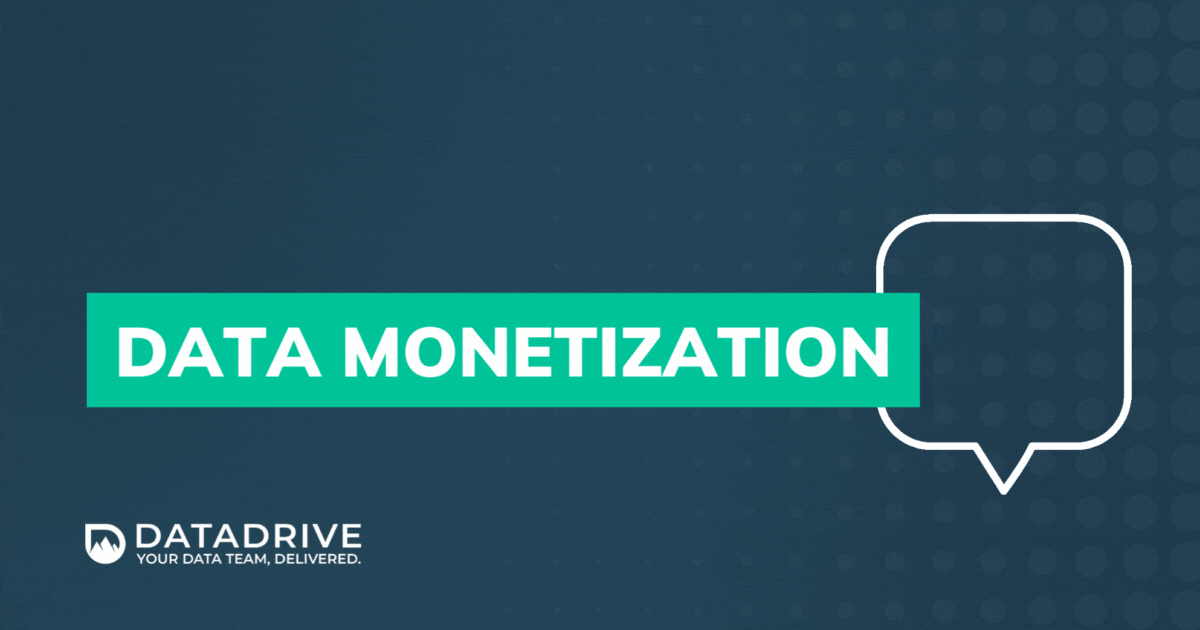Tableau Conference 2025 | Know Before You Go
If you’re a data enthusiast, analytics professional, or just someone curious about Tableau’s latest innovations, the Tableau Conference 2025 is your...
4 min read
 Luke Komiskey
Mar 15, 2024
Luke Komiskey
Mar 15, 2024

Everyone says, "data is the new gold," and there are a few ways to actually create revenue generation using insights. One such method to unlock the potential of data is the concept of data monetization. This guide explores data monetization, its importance, implementation strategies, real-world use cases, and how embedded data portals can turn revenue-generating data into a reality for your organization.
Data monetization refers to the process of turning data into tangible financial returns. It's about using data to generate revenue, either directly by selling access to insights, or indirectly by optimizing business operations. The concept of data monetization has grown in recent years because
Data monetization can take two primary forms: direct and indirect. Direct monetization involves selling data or insights, while indirect monetization leverages data to enhance business operations, leading to cost savings and increased revenue. Both approaches offer pathways to unlock the hidden value within your data assets.
Data monetization allows organizations to extract even more value from their data by exposing to external audiences. Because the real value of data lies in the ability to deliver faster, smarter decision-making, data monetization can provide a competitive advantage by offering data as a (often paid) value-added service.
Beyond a purely financial perspective, building external data products can also drive stronger relationships with vendors, partners, and the broader community an organization serves. The transparency of tracking performance, inventory, outcomes, etc. can deliver a 'stickiness' factor in customer retention as downstream organizations will build new processes around the newly available insights. During a time when hiring competent data talent is difficult, providing organized, accessible data formats goes a long way toward customer success and relations.
Additionally, the rise of cloud computing, big data technologies, and advanced analytics has made data more accessible and actionable than ever before. Organizations want access to data to enhance their own processes, and external data products are a creative way to offer an elevated, branded customer experience. Additionally, these technological advancements have lowered the barriers to entry for data monetization, enabling organizations of all sizes to participate in the new data economy.
Data monetization is more than data sharing; successful organizations deliberately design and deploy iterations on a data product suite - complete with feature backlogs, training & support programs, and ongoing enhancements and success measurements. External-facing data products are rarely set-it-and-forget-it.
A data product can be defined as any product or service that facilitates an end-user decision-making process or automates business processes, derived from data analytics. These products range from detailed reports and dashboards to APIs that deliver real-time insights. Like traditional products, they need to solve a specific problem or meet a particular need for their target audience - particularly when it costs money for customers to access.
Identify the Need: The first step in creating a data product is identifying a genuine need or opportunity in the market. This involves understanding target personas, the challenges or decision-making gaps that your data can address for a specific set of users, and creating user workflows with minimal friction for access, interactivity, and exportability.
Prototype and Validate: Before full-scale development, prototyping allows you to test your concept with potential users. This phase is crucial for gathering feedback and ensuring the proposed solution meets user expectations and needs, especially before charging for access. Validation helps refine the product concept and pressure test market interest further before significant resources are invested in development.
User Experience (UX) Design: For data products, UX design is not just about aesthetics; it's about making complex data accessible and understandable. The design on data products should facilitate easy interaction with the data, allowing users to derive insights without being overwhelmed by the complexity.
Iterative Development: Employing an agile development process enables you to build your data product in stages, incorporating user feedback at each iteration. This approach ensures that the product remains aligned with user needs and can adapt to changes in the market or data sources. You can expect a growing backlog of feature requests from external audiences.
Scalability and Security: As with any SaaS product, data products need to scale through not only handling large datasets, but also in the internal effort it takes to maintain, update, and support future iterations. Like any product, you will need to balance bespoke customer experience with maintainability to ensure low overhead. Additionally, extra care is needed to secure sensitive information, especially if they handle personal data or proprietary business insights.
Integration Capabilities: Your data product should play well with others. Integration capabilities, such as APIs, allow your product to be part of a larger system, adding value to existing software environments and workflows.
Go-to-Market Strategy: Launching your data product requires a well-defined go-to-market strategy. This includes defining your target audience, pricing model, marketing channels, and sales strategy. Tailor your messaging to highlight your data product's unique value to potential users and treat it as an entirely new product suite with sales and marketing efforts.
Implementing a successful data monetization strategy involves
While offering numerous opportunities, data monetization also presents certain risks and challenges. These include ensuring data privacy and compliance and overcoming technological and organizational hurdles. Adhering to data privacy regulations and maintaining customer trust is crucial in data monetization. Publically accessible links, poorly managed row-level security, and unsecured data assets can have massive consequences on lost business and legal exposure with existing customers.
The other hurdle that most organizations face is access to the niche skillsets at the interaction of product design, data analysis, and web development to successfully deploy an interactive web-based experience for accessing data externally.
To maximize the potential of data monetization, organizations should focus on high-impact opportunities such as optimizing workflows, offering data-based solutions, leveraging targeted marketing for upselling or cross-selling, and strengthening business partnerships.
Cloud-based embedded data portals play a pivotal role in data monetization. They allow organizations to offer data-as-a-service in a secure and accessible manner through any web browser. A well-designed data portal can help organizations provide real-time, curated insights to their customers, leading to improved decision-making and increased revenue. A secure data portal is an easy way to iterate and expand access to more content and new views without a large technical lift on the back-end infrastructure.
DataDrive provides managed data portals that assist organizations in deploying an embedded data portal in a matter of days. This allows organizations to deploy their insights securely without the hassle of setting up authentication and web infrastructure while digging through API integration frameworks. With DataDrive's managed data portals, organizations can transform their data into a valuable (revenue-generating) asset with the security and interactivity you want from a modern web-based reporting platform. Interested in learning more?
-2.gif)
If you’re a data enthusiast, analytics professional, or just someone curious about Tableau’s latest innovations, the Tableau Conference 2025 is your...

Tableau Plus is the new premium offering from Tableau, a leading data visualization and business intelligence platform. It builds upon the...

If you've spent any time working with Tableau, you've likely encountered the dreaded "Cannot Mix Aggregate and Non-Aggregate Arguments" error. It's a...